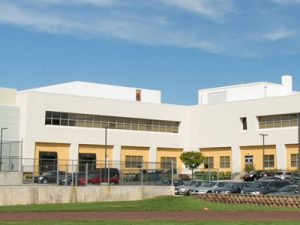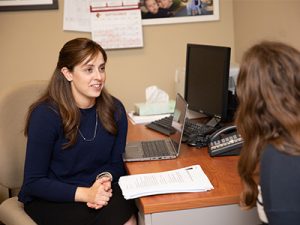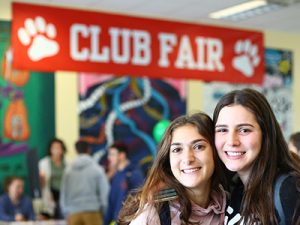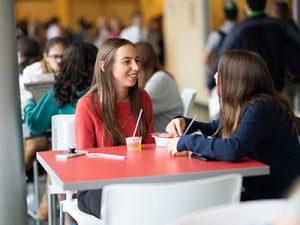Spotlight on: Science!
December 10, 2014
Throughout the science department, our students are actively and enthusiastically exploring the biological, chemical and physical basis of the world in which we live.

BIOLOGY:
It was wonderful to witness the freshmen display their understanding of the fundamental unit of life, the cell, by constructing models of cell organelles. Both their creativity and originality were on display as they clearly grasped the concept of structure and function.  Building upon the strong foundation acquired in 9th grade in the area of molecular biology, our research class is becoming adept at isolating, purifying and analyzing DNA sequences. Here we see them amplifying DNA using a technique called Polymerase Chain Reaction. In senior year, the emphasis on the application of knowledge resulted in sophisticated presentations as the AP Biology students researched the genetic basis of diseases and the scientific basis of many potential treatments looming on the horizon.
Building upon the strong foundation acquired in 9th grade in the area of molecular biology, our research class is becoming adept at isolating, purifying and analyzing DNA sequences. Here we see them amplifying DNA using a technique called Polymerase Chain Reaction. In senior year, the emphasis on the application of knowledge resulted in sophisticated presentations as the AP Biology students researched the genetic basis of diseases and the scientific basis of many potential treatments looming on the horizon.
CHEMISTRY
How do you motivate students to learn the symbols for the chemical elements to understand the organization of the periodic table? You could tell them to study for a quiz. Or, you could tell them instead to prepar e for element bingo. We chose the bingo approach. For the first game, a straight line bingo earned a small chocolate. The second game required an X or a plus sign, and garnered a bigger chocolate. The last game, the full card bingo, got a monster chocolate. Once they have mastered the elements, they can begin to predict certain properties of the elements based upon their location in the Periodic Table. In the lab, we saw that iron atoms can form two different types of ions. Each ion can undergo a different chemical reaction and form two different compounds when combining with the same non-metal.
e for element bingo. We chose the bingo approach. For the first game, a straight line bingo earned a small chocolate. The second game required an X or a plus sign, and garnered a bigger chocolate. The last game, the full card bingo, got a monster chocolate. Once they have mastered the elements, they can begin to predict certain properties of the elements based upon their location in the Periodic Table. In the lab, we saw that iron atoms can form two different types of ions. Each ion can undergo a different chemical reaction and form two different compounds when combining with the same non-metal.
PHYSICS
In AP Physics students are learning to tackle a topic that is particularly difficult for them: Newton’s laws of dynamics.  The key to understanding is to impress upon them that all of the problems they encounter can be solved by applying a simple set of rules and then thinking the problem through using those rules. What we hope to accomplish is the realization that the laws governing dynamics is not just a set of many different problems but rather a family of problems that have a common thread. In order to reinforce these concepts, we employ laboratory exercises that supply real-world data to the topic of dynamics which is seen in the accompanying picture.
The key to understanding is to impress upon them that all of the problems they encounter can be solved by applying a simple set of rules and then thinking the problem through using those rules. What we hope to accomplish is the realization that the laws governing dynamics is not just a set of many different problems but rather a family of problems that have a common thread. In order to reinforce these concepts, we employ laboratory exercises that supply real-world data to the topic of dynamics which is seen in the accompanying picture.







 Building upon the strong foundation acquired in 9th grade in the area of molecular biology, our research class is becoming adept at isolating, purifying and analyzing DNA sequences. Here we see them amplifying DNA using a technique called Polymerase Chain Reaction. In senior year, the emphasis on the application of knowledge resulted in sophisticated presentations as the AP Biology students researched the genetic basis of diseases and the scientific basis of many potential treatments looming on the horizon.
Building upon the strong foundation acquired in 9th grade in the area of molecular biology, our research class is becoming adept at isolating, purifying and analyzing DNA sequences. Here we see them amplifying DNA using a technique called Polymerase Chain Reaction. In senior year, the emphasis on the application of knowledge resulted in sophisticated presentations as the AP Biology students researched the genetic basis of diseases and the scientific basis of many potential treatments looming on the horizon. e for element bingo. We chose the bingo approach. For the first game, a straight line bingo earned a small chocolate. The second game required an X or a plus sign, and garnered a bigger chocolate. The last game, the full card bingo, got a monster chocolate. Once they have mastered the elements, they can begin to predict certain properties of the elements based upon their location in the Periodic Table. In the lab, we saw that iron atoms can form two different types of ions. Each ion can undergo a different chemical reaction and form two different compounds when combining with the same non-metal.
e for element bingo. We chose the bingo approach. For the first game, a straight line bingo earned a small chocolate. The second game required an X or a plus sign, and garnered a bigger chocolate. The last game, the full card bingo, got a monster chocolate. Once they have mastered the elements, they can begin to predict certain properties of the elements based upon their location in the Periodic Table. In the lab, we saw that iron atoms can form two different types of ions. Each ion can undergo a different chemical reaction and form two different compounds when combining with the same non-metal. The key to understanding is to impress upon them that all of the problems they encounter can be solved by applying a simple set of rules and then thinking the problem through using those rules. What we hope to accomplish is the realization that the laws governing dynamics is not just a set of many different problems but rather a family of problems that have a common thread. In order to reinforce these concepts, we employ laboratory exercises that supply real-world data to the topic of dynamics which is seen in the accompanying picture.
The key to understanding is to impress upon them that all of the problems they encounter can be solved by applying a simple set of rules and then thinking the problem through using those rules. What we hope to accomplish is the realization that the laws governing dynamics is not just a set of many different problems but rather a family of problems that have a common thread. In order to reinforce these concepts, we employ laboratory exercises that supply real-world data to the topic of dynamics which is seen in the accompanying picture.